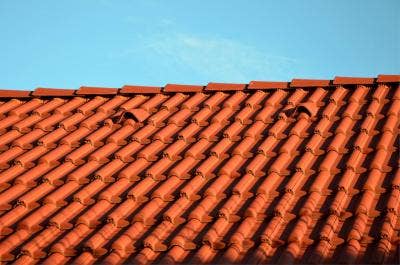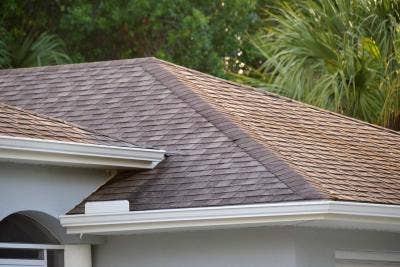Alternative Energy For Your Home
Part 1 - Solar Roof Tiles
Building houses has evolved with new techniques, materials and equipment in an environmentally responsible manner and there are a number of new innovations which capture and use existing energy sources in a sustainable and efficient manner.
Many people have understood the importance of adopting an environmental-friendly way of living and opt for construction materials or add-ons that support this lifestyle.
Ground Source Heat Pumps vs Solar Panels
For domestic applications, two of the major energy saving systems that you can install in your home to save money and reduce your carbon footprint are Ground Source Heat Pumps or Solar Panels.
While both can help achieve both financial and carbon-footprint savings, their are fundamental differences in their operation, costs, benefits and subsidies.
A Ground Source Heat Pump uses an electrically powered pump to push water through tubing deep underground where the constant temperature allows a heat exchanger to both heat the house in cold weather and cool it in warm weather. The pump requires an electrical source, so it can't eliminate power bills associated with heating altogether, but the system works at greater than 100% efficiency by providing greater heat than could be provided by the electricity supplied to the pump.
Depending on your existing heating system, a Ground Source Heat Pump could save you annually between £400 and £2000, between 1.8 and 11.1 tonnes of Carbon Dioxide and make you eligible for payments under the Government's Renewable Heat Incentive (RHI) of £2325 to £3690. (source)
However, you will still need to have an electricity supply, both for the heat pump itself and for the rest of the house.
Comparatively, Solar Panelling provides electricity exclusively which would have to be converted into heat for the home but it also means that you can, theoretically, completely eliminate your electricity bill.
Separate from the cheaper cost of installation, solar panels will eliminate your entire energy bill, save nearly 2 tonnes of Carbon Dioxide per year as well as getting you an additional £7-800 by providing electricity back into the grid under the government's Feed-in Tariff scheme.
Solar Panels and Solar Roof Tiles
One means to achieve this is considering solar modules and panels to feed the house's need for electricity and heat. However, there is considerable expenditure and effort required to properly fit and it can become an unviable option for many, as would be installing the solar panels on the ground. However, there is an alternative that alleviates the problem considerably: solar roof tiles. These have a more subtle aesthetics and are less obtrusive than solar panels, managing to easily blend into the surrounding roof tiles and harness the solar energy.
By installing solar roof tiles, you can cut electricity bills and even get paid for the generated electricity, due to the Feed-in Tariffs developed by the UK government. Moreover, beside cutting the carbon footprint, you can sell electricity back to the grid if your system is producing more electricity than needed.
Before deciding to go with solar roof tiles there are some things to take into consideration. Here are the most important aspects to know before choosing this form of renewable energy.
Aesthetics
As already mentioned, solar roof tiles are better looking and better fitting than the classic solar panels. These new solar devices are more desirable since their subtle appearance and wide range of colors and designs have the potential of attracting a greater array of prospective buyers. Compared to the bulky solar panels which obstruct the roof and are extremely visible, the solar roof tiles nicely blend with the other roof tiles and can even improve the design of a roof. Moreover, while solar panels only provide solar energy, solar roof tiles have a double application: they provide renewable energy and they also act as the main roof cover.
Shelf life
The life span of the solar roof tiles is similar to the life span of traditional roof tiles and of classic solar panels and it is situated somewhere between 20 and 30 years. What's more interesting for constructors and house owners is that solar roof tiles are designed to easily be replaced individually. This way, one will be able to prolong the life span of it's roof while enjoying the benefits of renewable energy.
Solar PV or thermal
Solar roof tiles can only provide one of two things: either solar PV and thus electricity or solar thermal thus hot water. At the current moment there is no solar roof tiles on the market that can provide both, unlike the solar panel. Another thing worth mentioning is that since this is a rather new technology, it hasn't reached its full potential yet but it is gradually progressing. This being said, solar roof tiles have a 10-20% less power than the solar panels.
Cost
One should bear in mind the fact that solar roof tiles are generally more expensive than the traditional solar panels. Of course, solar roof tiles will look great and will perfectly integrate with the other roof tiles, but they will often cost double as solar panels would. However, a great advantage is that even buildings that are in protected areas or have a need to meet a certain look in order to get planning permission will be able to take advantage of the benefits of solar roof tiles and hence renewable energy. It's important to remember the fact that solar roof tiles should always be installed by an accredited installer to avoid mistakes and also be eligible to receive the Feed n Tariffs.
While a 4KW array of solar panels will cost approximately £5000-6000, the Solar PV tiles are a little more expensive, but comparable when you include the cost of the concrete tiles. This is also considerably cheaper than the £11,000 to £15,000 cost of ground source heat exchange system.
Solar roof tiles are a technology unlike anything else available and it blends the need for aesthetics with an environmental-friendly mentality. By beautifully integrating solar tiles in the roof, even homes in historic or conservation areas can enjoy the multiple benefits of the endless supply of free and clean energy. The initial investment in solar panels will definitely be fully covered by the long-term financial gain and the guaranteed payments from the UK government.
Our Top Videos.


How to install a Velux Integra Electric Roof Window (5 Parts)
In this five-part guide, we take you through the full installation of a Velux GGU Centre Pivot Integra Roof Window onto an...


How to install a Duratech Centre-Pivot Pine Roof Window
Once you begin unpackaging the window, you’ll find in the box the brackets, the handle and the fixings. And there will also be some instructions...
Ideas & Advice
How-tos, tutorials and videos


How and why to use or snap a chalk line
Chalk lines are the fastest way to mark straight guidelines on flat surfaces. They are used extensively in the building and construction industry to speedily and accurately ‘draw’ straight lines between two points. Chalk lines are inexpensive tools...


Skylight Blinds: A Guide To The Different Types
Like many household product, blinds for skylight windows come in all shapes, sizes, and materials. Some are designed with a tangible purpose in mind, while others are more for show. One thing’s for sure - buying any type of skylight blind...








